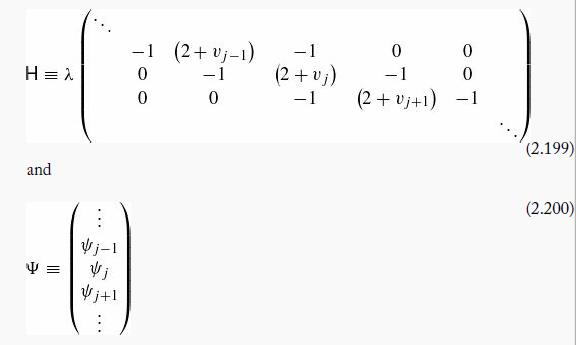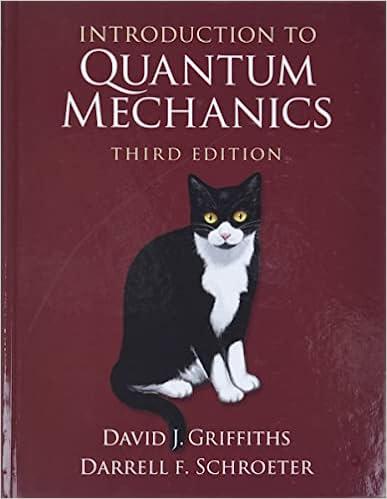One way to obtain the allowed energies of a potential well numerically is to turn the Schrdinger
Question:
One way to obtain the allowed energies of a potential well numerically is to turn the Schrödinger equation into a matrix equation, by discretizing the variable x. Slice the relevant interval at evenly spaced points, {xj} with xj+1 - xj Ξ Δx, and let Ψj Ξ Ψ (xj) (likewise Vj Ξ V (xj)). then

(The approximation presumably improves as Δx decreases.) The discretized Schrödinger equation reads

In matrix form,
HΨ = EΨ
where (letter vj Ξ Vj/λ)

(what goes in the upper left and lower right corners of H depends on the boundary conditions, as we shall see). Evidently the allowed energies are the
eigenvalues of the matrix H (or would be, in the limit Δx → 0). Apply this method to the infinite square well. Chop the interval (0 ≤ x ≤ α) into N+1 equal segments (so that Δx = α/(N+1)), letting x0 Ξ 0 and xN+1 Ξ α. The boundary conditions fix Ψ0 = ΨN+1 = 0, leaving

(a) Construct the N x N matrix H, for N =1, N = 2 and N = 3. (Make sure you are correctly representing Equation 2.197 for the special cases j =1 and j = N.)
(b) Find the eigenvalues of H for these three cases “by hand,” and compare them with the exact allowed energies (Equation 2.30).
(c) Using a computer (Mathematica’s Eigenvalues package will do it) find the five lowest eigenvalues numerically for N = 10 and N = 100, and compare the exact energies.
(d) Plot (by hand) the eigenvectors for N = 1, 2, and 3, and (by computer, Eigenvectors) the first three eigenvectors for N = 10 and N = 100.
Step by Step Answer:

Introduction To Quantum Mechanics
ISBN: 9781107189638
3rd Edition
Authors: David J. Griffiths, Darrell F. Schroeter





